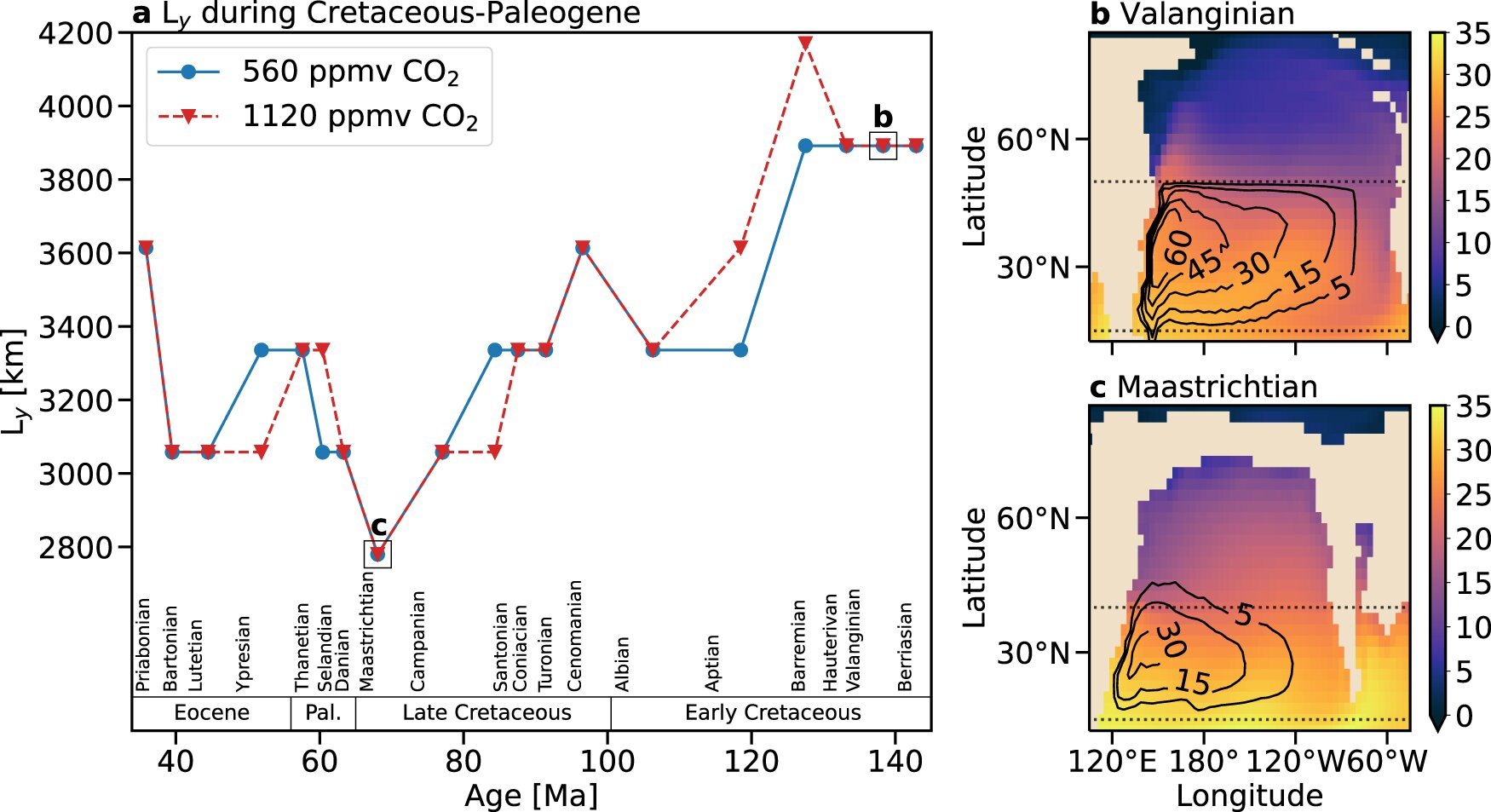Hebrew University conducts a study to determine whether a new mechanism for climate change exists

A recent study has discovered a previously unknown climate mechanism, which provides valuable insights into both past and present climate conditions on Earth. The study focuses on the Cretaceous period, during which high levels of atmospheric carbon dioxide were present. By examining how large ocean currents transported warm water, the research highlights the crucial role these currents played in shaping temperature gradients. The findings suggest that continental shifts during the Cretaceous disrupted these currents, resulting in significant temperature differences between the poles and the tropics. This research not only enhances our understanding of past climate but also emphasizes the importance of ocean currents in shaping modern climate systems.
In Jerusalem, the research study conducted by Hebrew University's Ph.D. candidate, Kaushal Gianchandani, under the guidance of Professors Nathan Paldor and Hezi Gildor from the Institute of Earth Sciences at the Hebrew University, in collaboration with Prof. Ori Adam and Sagi Maor from the Hebrew University has unveiled a previously unknown mechanism that significantly influences Earth's climate.
This cutting-edge research applies a novel analytic model developed by three Hebrew University researchers two years ago, focusing on wind-driven circulation at the ocean's surface and highlighting the pivotal role of ocean basin geometry. This study explores the climate during the Cretaceous period, around 145 to 66 million years ago when there was a lot of carbon dioxide (warming gas) in the air. It looks at how big ocean swirls, which move warm water from the tropics to the poles, influenced the temperature difference between these two regions. This temperature difference is crucial for understanding why there were so many different kinds of plants and animals during the Cretaceous period.
In their research, the scientists aimed to uncover the complex relationship between changes in ocean current patterns (gyral circulation) that result from the arrangement of continents on Earth and variations in temperature gradients during the Cretaceous era when dinosaurs roamed the Earth. To do this, they conducted a thorough analysis using computer models that simulate ancient climates. Their findings revealed that the movement of Earth's continents during the Cretaceous period caused a slowdown in the large swirling ocean currents responsible for carrying warm water from the equator to the poles. This slowdown disrupted the way the ocean regulated its surface temperatures, resulting in a significant increase in temperature differences between the poles and the tropics during that time. These findings align with geological evidence from the Cretaceous era, providing a more comprehensive understanding of past climate dynamics.
Key takeaways:
Discovery of a Previously Unknown Mechanism: The study has unveiled a previously unknown mechanism that significantly influenced Earth's climate during the Cretaceous period. This mechanism is related to changes in the distribution of the continents which affects ocean current patterns and their impact on temperature gradients.
Implications for Contemporary Climate: While the study primarily focuses on the Cretaceous period, it has implications for our understanding of contemporary climate systems. It highlights the importance of ocean gyres (circulation patterns) in shaping climate dynamics, both in the past and today. It underscores the complexity of Earth’s climate and the strong effect that processes other than CO2 concentration might have on it.
Focus on Cretaceous Period: The research primarily focuses on the climate during the Cretaceous period, which occurred approximately 145 to 66 million years ago. This period is of interest because it was characterized by high levels of carbon dioxide in the atmosphere, which is a greenhouse gas that can influence global temperatures.
Role of Ocean Swirls (Gyral Circulation): The study investigates the role of large ocean swirls, known as gyral circulation, in transporting warm water from the tropics to the poles. Understanding how these currents influenced temperature differences between the poles and the tropics is crucial for comprehending the biodiversity and climate of the Cretaceous period.
Impact of Continental Movement: The research findings suggest that the movement of Earth's continents during the Cretaceous period disrupted the large ocean currents responsible for transporting warm water. This disruption led to significant increases in temperature differences between the poles and the tropics during that time.
Validation with Geological Evidence: The study's findings align with geological evidence from the Cretaceous era, providing further support for the proposed mechanisms and enhancing our understanding of past climate dynamics.
This research sheds light on the complex relationship between ocean circulation patterns, equator-to-pole temperature differences, and past climate conditions. Although it primarily contributes to our understanding of our planet's ancient climate, it also emphasizes the significance of oceanic processes in shaping modern climate systems. This knowledge can potentially help us model and predict the effects of climate change in the present era, as ocean circulation patterns continue to play a crucial role in regulating global climate.
The study carried out by Hebrew University has uncovered a previously unknown mechanism that could have a significant impact on Earth's climate. However, further research is necessary to fully comprehend the implications of this mechanism and its potential effects on global climate. Moreover, it is crucial to consider the potential impacts of other factors, such as human activity, that could be influencing the climate. Hence, it is too early to draw any definitive conclusions about the potential impacts of this newly discovered mechanism on Earth's climate.

 How to resolve AdBlock issue?
How to resolve AdBlock issue?